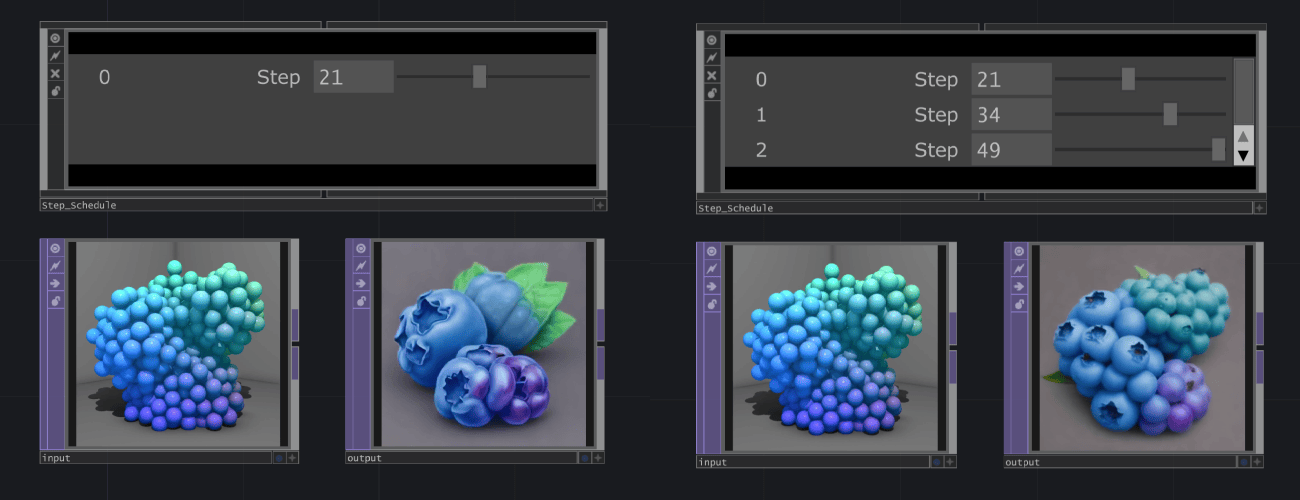- Input Structure: Your original image (Reality).
- Diffusion Noise: Random static (Creativity).
Single Step Schedule
In StreamDiffusionTD, users can choose a single step between 1–50.Where the step is placed determines the mixture of noise vs. structure:
- Low steps (1–15):
More emphasis on Diffusion Noise → more creativity, looser structure, less adherence to the input. - High steps (35–50):
More emphasis on Input Structure → outputs that strongly match, or even nearly replicate, your input.

Multi-Step Schedule
StreamDiffusionTD also allows a multi-step schedule, where you can place up to four steps in order from lowest to highest.It is important to note that a multi-step schedule requires MORE processing power A Multi-Step Schedule allows StreamDiffusion to run several refinement passes within a single frame. Instead of jumping directly from one noise level to the final output, the model moves through multiple steps in sequence (e.g., 1 → 24 → 49). Each step receives the result of the previous one and refines it further.
